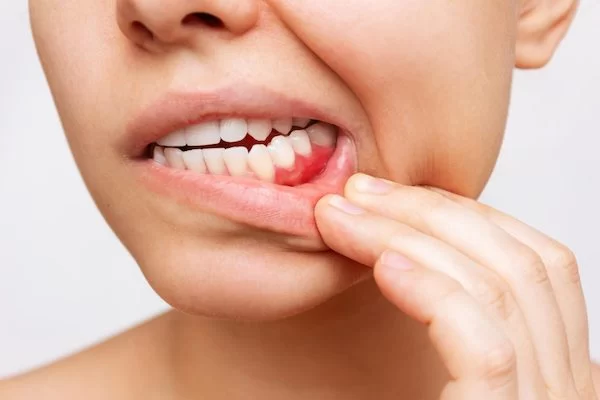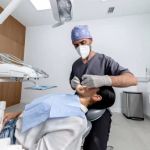
Understanding Tooth Abscess: Causes, Symptoms, and Treatment Options
1. Causes of Tooth Abscess
A tooth abscess is a pocket of pus that forms inside a tooth or gum due to bacterial infection. The primary cause of a tooth abscess is a bacterial infection that usually originates from untreated dental cavities, gum disease, or trauma to the tooth. When bacteria enter the tooth through a crack, chip, or cavity, they can cause an infection in the root, leading to the formation of an abscess. This can also occur when an infection spreads from the gum tissue into the surrounding bone.
Other factors that can contribute to the development of a tooth abscess include poor oral hygiene, a weakened immune system, and not seeking timely treatment for dental issues. Regular dental checkups are crucial to preventing the buildup of bacteria and identifying early signs of potential abscess formation.
2. Symptoms of Tooth Abscess
Recognizing the symptoms of a tooth abscess early can help prevent more severe complications. The common symptoms include:
- Severe tooth pain, often throbbing or sharp, that worsens when chewing or applying pressure to the tooth.
- Swelling in the gums or face around the affected tooth.
- A foul taste in the mouth or foul-smelling breath due to the presence of pus.
- Fever or general fatigue, indicating the spread of infection.
- In some cases, visible swelling or a pimple-like bump on the gums near the infected tooth.
If you notice any of these symptoms, it is important to see a dentist immediately to prevent the infection from worsening or spreading to other parts of the body.
3. Treatment for Tooth Abscess
Treating a tooth abscess typically requires professional dental intervention. The most common treatment options include:
- Root Canal Therapy: If the abscess is located within the tooth, a root canal may be necessary to remove the infected tissue and seal the tooth.
- Drainage of the Abscess: If the abscess has caused a visible lump, the dentist may need to drain the pus to reduce the pressure and eliminate the infection.
- Antibiotics: In some cases, antibiotics may be prescribed to help control the infection, especially if it has spread to the surrounding tissues or caused a fever.
- Tooth Extraction: If the tooth is too damaged and cannot be saved, the dentist may need to extract the affected tooth.
It’s essential to seek dental treatment as soon as symptoms appear to prevent the infection from spreading to the jawbone or other parts of the body.
4. Preventing Tooth Abscess
The best way to avoid a tooth abscess is by maintaining excellent oral hygiene and preventing dental issues before they escalate. Here are a few preventive measures:
- Brush your teeth at least twice a day with fluoride toothpaste and floss daily to remove plaque and bacteria.
- Visit your dentist regularly for checkups and cleanings to catch cavities or gum disease early.
- Use fluoride treatments or mouth rinses to strengthen your teeth and prevent decay.
- Avoid sugary foods and drinks that can lead to the buildup of harmful bacteria in the mouth.
- Wear a mouthguard if you engage in sports to protect your teeth from injury.
By following these steps, you can significantly reduce your risk of developing a tooth abscess and maintain a healthy smile.
5. Protect Your Teeth Today
If you are experiencing symptoms of a tooth abscess or are concerned about your oral health, don't wait—consult with a dentist as soon as possible. Early intervention is crucial for preventing serious complications. At Dentistry Toothtruth, we offer expert advice and effective solutions for treating and preventing tooth abscesses.







 Summit Dental Care4.0 (124 review)
Summit Dental Care4.0 (124 review) Fair Oaks Orthodontics5.0 (29 review)
Fair Oaks Orthodontics5.0 (29 review) Dental Care of North Fort Myers4.0 (708 review)
Dental Care of North Fort Myers4.0 (708 review) Sarkissian Dentistry: Robert Sarkissian, DDS, MAGD5.0 (84 review)
Sarkissian Dentistry: Robert Sarkissian, DDS, MAGD5.0 (84 review) Root 66 Endodontics4.0 (16 review)
Root 66 Endodontics4.0 (16 review) Scott Soderquist, DDS, MS0.0 (0 review)
Scott Soderquist, DDS, MS0.0 (0 review) The Importance of Oral Health Education During Pregnancy for a Healthy Pregnancy
The Importance of Oral Health Education During Pregnancy for a Healthy Pregnancy Best Tips for Brushing Your Teeth Properly for Healthy Gums: Essential Techniques for Oral Health
Best Tips for Brushing Your Teeth Properly for Healthy Gums: Essential Techniques for Oral Health Why Skipping Dental Checkups Can Lead to Bigger Oral Health Problems
Why Skipping Dental Checkups Can Lead to Bigger Oral Health Problems Advantages of Porcelain Dental Restorations
Advantages of Porcelain Dental Restorations How Can Diabetes Cause Tooth and Gum Problems? Preventing and Managing Oral Health Issues
How Can Diabetes Cause Tooth and Gum Problems? Preventing and Managing Oral Health Issues Healthy Habits for Promoting Good Oral Health and Hygiene: Tips for a Healthy Smile
Healthy Habits for Promoting Good Oral Health and Hygiene: Tips for a Healthy Smile